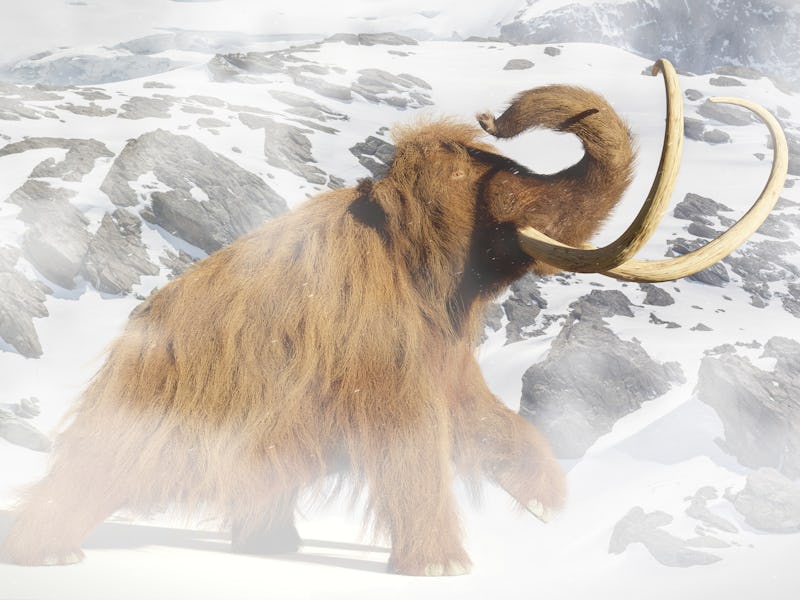Woolly mammoth genetics study reveals their miserable, lonely end
This is just brutal.

Life for the last woolly mammoths on Earth was not pretty.
A new genetics study reveals that the last population of woolly mammoths to roam the planet suffered a horrific, isolated demise.
Researchers analyzed the genome of 4,000-year-old mammoth remains that were found on Wrangel Island, a desolate spit of land off the coast of Siberia in the Arctic ocean. These mammoths may have been the last of their kind — and their genomes reveal that it may have been their isolation that eventually killed them.
In their final years on Earth, the mammoths likely carried a series of deleterious (harmful) genetic mutations that left them with myriad problems — all of which likely hastened their extinction.
The mammoths' genes reveal problems with their neurological development, fertility issues among males, and an impaired ability to smell.
The results were published Friday in the journal Genome Biology and Evolution.
A sorry end
To draw out this (depressing) information, the researchers used genome sequence data compiled from the DNA of mammoth remains found on Wrangel Island and compared the genomes with DNA taken from two other ancient mammoths that lived during a time when the giant animals thrived. They also compared the DNA with that from three modern-day Asian elephants.
The researchers discovered that, as the number of woolly mammoths dwindled, interbreeding and decreased genetic diversity likely contributed to their genetic mutations. That set in motion a vicious cycle: The lower population numbers made it harder for the gene pool to recover — and thus, harder for the species as a whole to bounce back. It was only a matter of time before these massive beasts met their grisly end.
The findings fit with previous studies that identified mutations in mammoth DNA samples from Wrangel Island. But this is the first time scientists have been able to piece together a picture of what these mutations actually did to the mammoths — and it is a bleak one.
The study has implications for species living today, lead author and University of Buffalo assistant professor Vincent Lynch said in a statement. It should act as a grim warning as to what can happen as a result of species decline and isolation as a result of human encroachment, hunting, and climate change.
“Beyond suggesting that the last mammoths were probably an unhealthy population, it’s a cautionary tale for living species threatened with extinction,” Lynch said. “If their populations stay small, they too may accumulate deleterious mutations that can contribute to their extinction.”
For the many animals at-risk of extinction, some perhaps within the next decade, it bodes a horrendous fate
Abstract: Woolly mammoths were among the most abundant cold adapted species during the Pleistocene. Their once large populations went extinct in two waves, an end-Pleistocene extinction of continental populations followed by the mid-Holocene extinction of relict populations on St. Paul Island ∼5,600 years ago and Wrangel Island ∼4,000 years ago. Wrangel Island mammoths experienced an episode of rapid demographic decline coincident with their isolation, leading to a small population, reduced genetic diversity, and the fixation of putatively deleterious alleles, but the functional consequences of these processes are unclear. Here we show that a Wrangel Island mammoth genome had many putative deleterious mutations that are predicted to cause diverse behavioral and developmental defects. Resurrection and functional characterization of several genes from the Wrangel Island mammoth carrying putatively deleterious substitutions identified both loss and gain of function mutations in genes associated with developmental defects (HYLS1), oligozoospermia and reduced male fertility (NKD1), diabetes (NEUROG3), and the ability to detect floral scents (OR5A1). These data suggest that at least one Wrangel Island mammoth may have suffered adverse consequences from reduced population size and isolation.